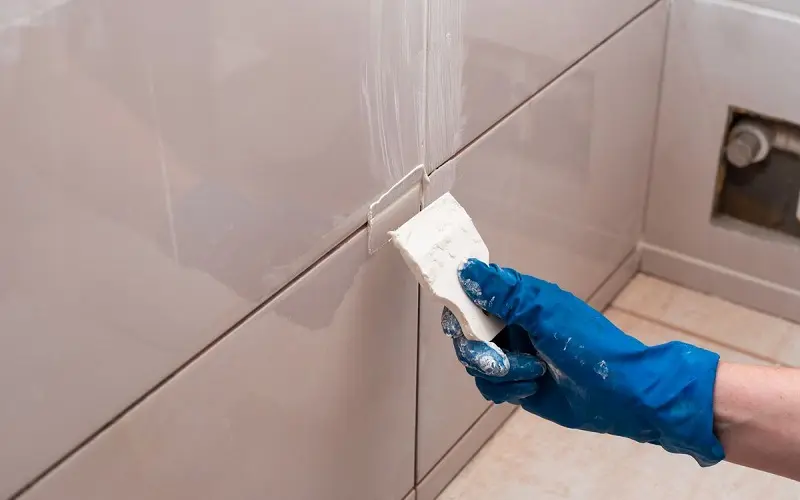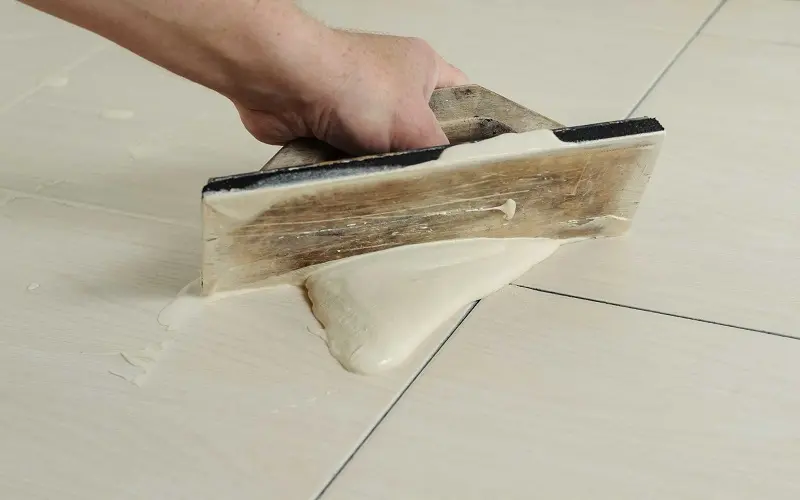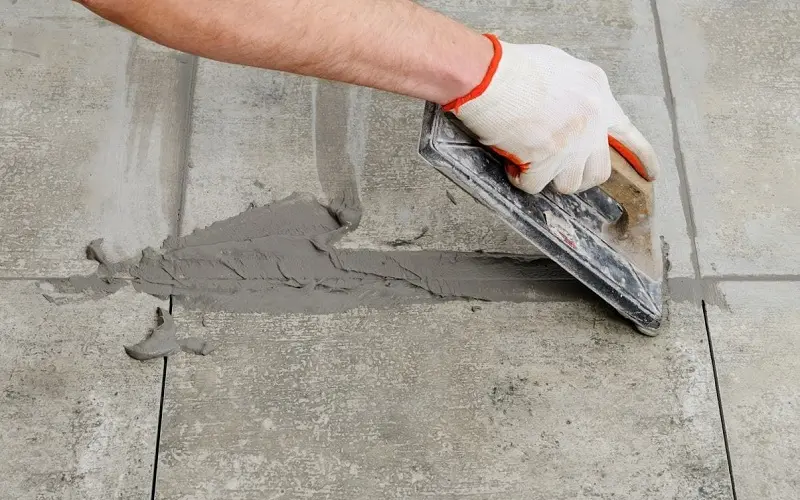Everyone wants to start home improvement projects sooner or later. But before you do, pay special attention to an underrated element.
Grout is a mixture of water, cement, and sand. It plays a key role in bonding and sealing the tiles. This stuff ensures not only its structural integrity but also its aesthetic appeal. One common question during tiling endeavors is, “How long does grout take to dry?”
Delving into this query is essential for achieving successful and lasting results. We will examine the delicate process of grout drying. We’d like to discuss the aspects that influence drying time.
A greater understanding of the drying process would enable enthusiasts, homeowners, and experts to make more educated decisions, avoid costly mistakes, and assure the lifespan of tile installation. So, you’ve chosen to do a minor bathroom renovation.
Or perhaps you’ve opted to perform a major kitchen renovation? You must be skilled in determining the drying time of grout. It is essential for a successful and long-lasting tile installation project.
Different Types of Grout Drying Times

Natalia Kokhanova/Shutterstock
Different types of grout have different drying times. It largely depends on their composition and purpose. We suggest you find out how long different types of grout take to dry.
- Standard Cement-Based Grout: This traditional option typically dries within 24 to 72 hours. Factors like humidity, temperature, and the specific brand can influence the duration. It’s important to allow ample curing time before exposing the grout to moisture.
- Rapid-Setting Grout: Designed for faster projects, rapid-setting grout can set in as little as 2 to 4 hours. However, it’s crucial to work swiftly due to its accelerated drying time.
- Epoxy Grout: Known for its exceptional durability, epoxy grout takes 24 to 48 hours to dry. Its chemical composition contributes to a stronger bond and reduces its vulnerability to staining.
- Urethane Grout: This versatile grout has a grout drying time of 24 hours. It is highly resistant to moisture and chemicals. You can use it in a wide variety of applications.
- Pre-Mixed Grout: Convenient and ready-to-use grouts prepared in advance usually dry within 24–48 hours. The same factors as for standard cement-based grout can affect its drying time.
Understanding these differences in grout drying time is essential for you. That way, you can plan, execute, and maintain successful tile installation projects.
Factors That Impact the Drying Time

DUO Studio/Shutterstock
The drying time of grout depends on several influencing factors. You need to consider them so that your grout drying process is optimal.
- Humidity: Higher humidity levels can prolong drying times, while low humidity accelerates the process.
- Temperature: Warmer temperatures generally expedite drying, whereas colder conditions can extend the timeframe.
- Grout Type: Different grout compositions, such as cement-based, epoxy, or urethane, possess varying drying characteristics.
- Tile Size and Density: Larger or denser tiles can create shading and affect airflow. It can slow down grout drying times.
- Ventilation: Proper air circulation facilitates moisture evaporation, aiding in quicker drying.
- Application Thickness: Thicker layers of grout take longer to dry compared to thin applications.
- Additives: Some additives or accelerators can alter drying times, particularly in rapid-setting grouts.
- Clean-Up and Sealing: Improper cleaning or premature sealing can impede drying and curing.
Understanding and managing these factors helps ensure the timely and successful drying of grout. Ultimately, this contributes to the longevity and integrity of the tile flooring.
How Long Does Grout Take to Dry? Indoor vs. Outdoor Difference

Dmytro Kohut/Shutterstock
The difference between inside and outside influences how long grout takes to dry. The result can also be different, so here are the differences:
Indoor
Generally, indoor conditions offer more control over variables like humidity and temperature. It often results in a shorter drying time.
It takes approximately 24 to 72 hours for standard cement-based grouts. Proper ventilation and consistent climate conditions enhance the drying process indoors.
Outdoors
Outdoor settings introduce greater unpredictability due to exposure to weather elements. Factors such as rain, sun, and wind can increase the drying time.
Sometimes this period can be extended by several days. In addition, freeze-thaw cycles in colder climates can affect grout integrity.
Using appropriate outdoor-grade grouts and factoring in potential weather variations are crucial for successful outdoor tile projects.
Understanding the nuances of the grout drying process is paramount. You can achieve durable and visually appealing results in both cases.
How to Make It Dry Faster

DUO Studio/Shutterstock
Expediting grout drying can be essential for time-sensitive projects. To accelerate the process:
- Controlled Environment: Keep the room at an optimal temperature (around 70°F). And don’t forget the low humidity level (less than 60%).
- Increase Ventilation: Enhance airflow using fans or open windows to facilitate moisture evaporation.
- Heat Source: Use mild heat sources, such as room heaters, to warm the room slightly. However, avoid excessive heat, which may damage the grout drying process.
- Rapid-Setting Grout: Opt for rapid-setting grout, which naturally dries faster. But it works swiftly due to its accelerated drying time.
- Grout Additives: Some additives can expedite drying. Consult the manufacturer’s recommendations before use.
- Thin Applications: Apply grout thinly and evenly to speed up drying. Avoid thick layers that retain moisture.
- Prevent Moisture: Keep the area dry after application, avoiding water exposure until it is fully cured.
The balance of these methods allows for faster grout drying times. You will not compromise the quality and durability of the cladding.
Bottom Line
When it comes to tile installation and home improvement, understanding the subtleties of grout drying time is paramount to achieving aesthetic perfection and long-lasting functionality.
We have already figured out how long grout takes to dry. And you have realized that the length of time grout takes to dry depends on many factors. Whether working on a masterpiece indoors or in an outdoor oasis, you must consider these factors.
By creating optimal conditions, you can effectively speed up the drying process. Arm yourself with knowledge and a set of strategies.
That way, you can navigate the intricacies of grout drying, ensuring the success and longevity of your tile installation projects.

